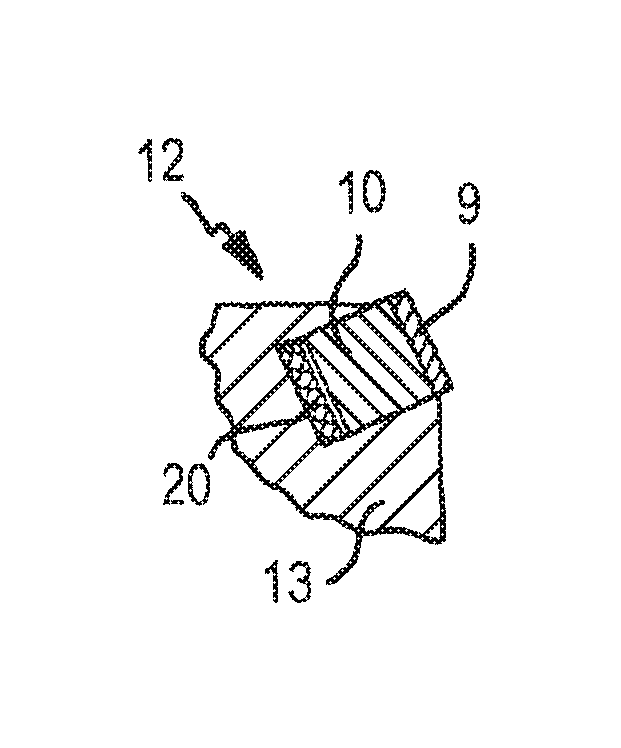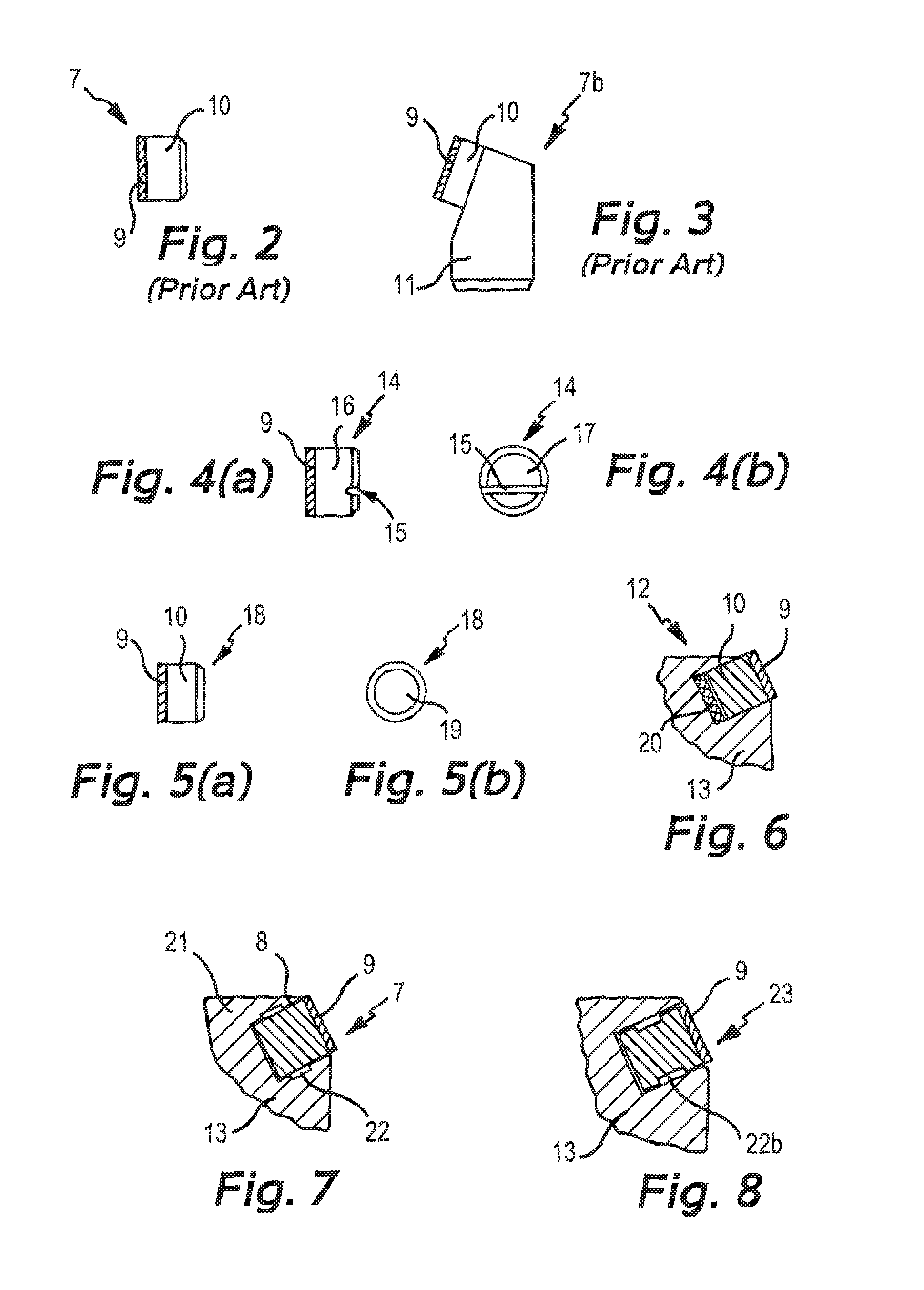Cutting assembly suitable for use on a drillable drill bit
a drilling bit and cutting assembly technology, applied in drilling pipes, drilling equipment, manufacturing tools, etc., can solve the problems of limiting the form of conventional drill bits, high cost of oil exploration in offshore regions, and long round trip time to pull out a drill bit and replace it with another one, so as to reduce the interference area
- Summary
- Abstract
- Description
- Claims
- Application Information
AI Technical Summary
Benefits of technology
Problems solved by technology
Method used
Image
Examples
Embodiment Construction
[0079]As discussed above, when developing a casing drill bit 1 it is important that the cutting assembly 12 i.e. the combination of the cutting members 5 and the attached cutters 7 is as robust as possible. This is to ensure that the cutting forces, and more importantly the impact forces experienced by the drill bit 1 do not cause the cutters 7 to chip or fracture or be sheared from the cutting members 5. For a drillable drill bit, represented generally in the following description by the reference numeral 13, these considerations are obviously still important. However, during a drill out operation the forces attempting to dislodge the cutters 7 from the body of the drill bit 13 have an opposite orientation to the normal drilling forces. This effect can be exploited by introducing a detachment facilitating feature at the interface between the cutters and the cutting members in order to provide a drillable drill bit 13 comprising cutters that can be retained upon a drillable drill bi...
PUM
| Property | Measurement | Unit |
|---|---|---|
| area | aaaaa | aaaaa |
| diameter | aaaaa | aaaaa |
| depth | aaaaa | aaaaa |
Abstract
Description
Claims
Application Information
 Login to View More
Login to View More - R&D
- Intellectual Property
- Life Sciences
- Materials
- Tech Scout
- Unparalleled Data Quality
- Higher Quality Content
- 60% Fewer Hallucinations
Browse by: Latest US Patents, China's latest patents, Technical Efficacy Thesaurus, Application Domain, Technology Topic, Popular Technical Reports.
© 2025 PatSnap. All rights reserved.Legal|Privacy policy|Modern Slavery Act Transparency Statement|Sitemap|About US| Contact US: help@patsnap.com



